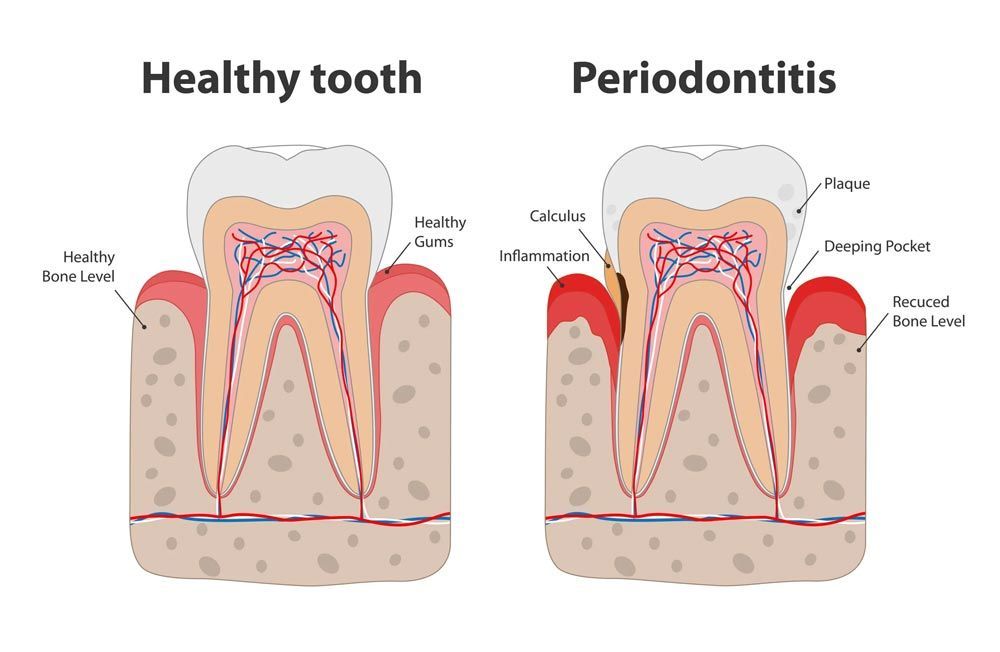Fresh Expressions Dental
Periodontic in Accokeek, MD
Bone Grafting
Bone grafting is where the jawbone is built up to accommodate a dental implant or other restorative device. Bone grafting is a common procedure that is used frequently for dental implants and other periodontal procedures. The bone used to graft is taken from a sample from the patient. Many times, the bone is taken from another area of the mouth when drilling takes place.
The bone fragments are suctioned from the mouth and used for the graft. Cadaver bone fragments are also used. They are harvested by bone banks and are a very safe source for bone donation.
Occlusal Adjustment
Do you wake in the morning with sore jaws? When you bite, do you feel like your jaw is lopsided? If so, then you may need an occlusal adjustment. An occlusal adjustment corrects the alignment of the bite, that is a result of loose, shifting, crowded, or missing teeth. The result is an evenly distributed bite that eliminates irregular pressure on one side of the mouth. Once your bite is adjusted, your teeth will meet properly. Occlusal adjustment causes minimal pain, and only a little discomfort. The adjustment is made by using a dental drill using a fine filing stone. In addition to the actual adjustment, removal mouthpieces are also utilized, to protect the tooth surface, and relax the jaw muscles once the adjustment is completed.
Mouth guards are an essential piece of equipment in contact sports. They should be worn by athletes of all ages who participate in sports such as:
New technology allows dentists to accurately identify the areas, which need adjustments. The dentist utilizes a computer scan of the mouth, which records hundreds of bite registrations per minute, and notes even the slightest irregularity. That data allows the dentist to make only the adjustments that are absolutely necessary, which ensures a well aligned bite and minimal tooth wear.
If you suspect that you may need an occlusal adjustment, schedule an appointment.
Periodontal (gum) disease
Periodontal (gum) disease is insidious. It is an infection of the gums that starts out as plaque, an opaque film on the teeth that hardens to form tartar. As tartar accumulates, it harbors bacteria that attack the soft tissue around the gums. This is the early stage of gum disease known as Gingivitis.
The disease advances silently, often without pain, and before you know it, you are losing your teeth and you don't know why.
Tooth loss is only the most obvious indicator of gum disease. Scientific research has discovered linkage between gum disease and stroke, heart disease, diabetes - even an increased risk for pregnant women. When your gums become diseased, your entire immune system is weakened.
In the past, fear of painful dental surgery has kept people with gum disease from seeking the care they needed. Well, those days are gone forever.

Scaling & Root Planning
Gingivitis is a generative disease that left untreated, will cause significant tooth and gum deterioration. Just the word gingivitis can strike panic in a patient’s mind. The reality is that the treatment is simple and performed right in your dentist’s office.
Plaque and tarter that sits on the teeth provides an environment, which allows bacteria to thrive and multiply. The bacteria cause the gums to become inflamed and bleed. The condition becomes more noticeable when you brush your teeth or sometimes when you eat. These are signs of the early stage of gingivitis. Gingivitis is easily treated by having the hygienist scale and polish the teeth. If gingivitis is left untreated, the condition will progress and the roots will need a planing. The difference between scaling and root planing is simple. Scaling is the removal of the dental tartar from the tooth surface Root planing is the process of smoothing the root surfaces and removing the infected tooth structure.
As a non-surgical procedure, scaling and planing is performed without any anesthesia, in the dentist’s office. While the procedure is usually painless, advanced stages of gingivitis may make it necessary to numb the area for complete comfort. Deep scaling and root planing is usually broken down into one section of the mouth per appointment. This allows for adequate healing time, and reduces the time for each appointment.
Start your journey to a healthier smile
Our dedicated team combines expertise with compassion to provide personalized care and transformative treatments, ensuring you achieve the confident, radiant smile you deserve.


